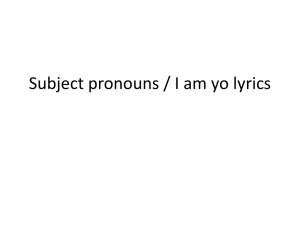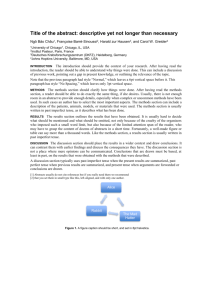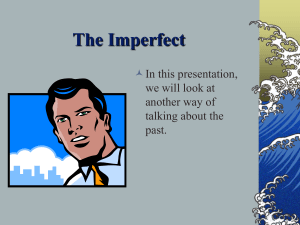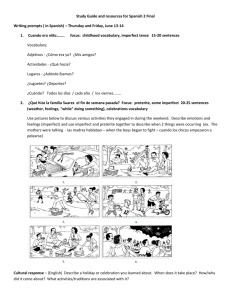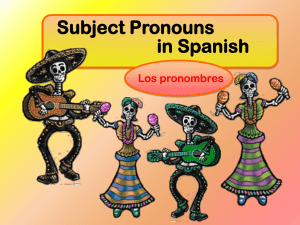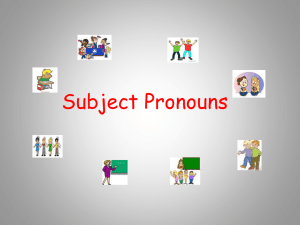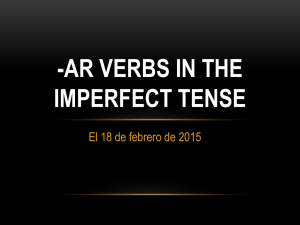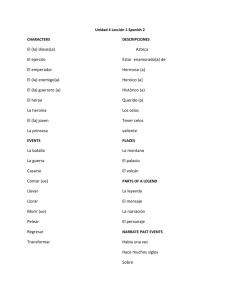Spanish Regular Verbs – Present Tense
advertisement
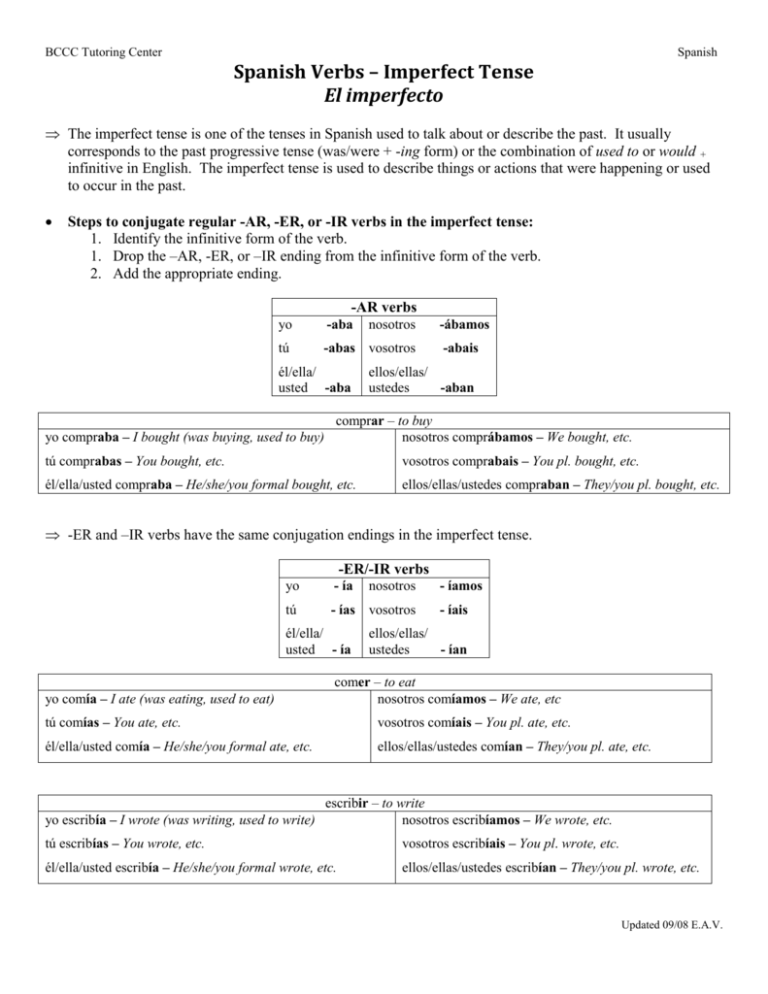
BCCC Tutoring Center Spanish Spanish Verbs – Imperfect Tense El imperfecto The imperfect tense is one of the tenses in Spanish used to talk about or describe the past. It usually corresponds to the past progressive tense (was/were + -ing form) or the combination of used to or would + infinitive in English. The imperfect tense is used to describe things or actions that were happening or used to occur in the past. Steps to conjugate regular -AR, -ER, or -IR verbs in the imperfect tense: 1. Identify the infinitive form of the verb. 1. Drop the –AR, -ER, or –IR ending from the infinitive form of the verb. 2. Add the appropriate ending. -AR verbs yo -aba tú -abas vosotros él/ella/ usted -aba nosotros -ábamos -abais ellos/ellas/ ustedes -aban comprar – to buy yo compraba – I bought (was buying, used to buy) nosotros comprábamos – We bought, etc. tú comprabas – You bought, etc. vosotros comprabais – You pl. bought, etc. él/ella/usted compraba – He/she/you formal bought, etc. ellos/ellas/ustedes compraban – They/you pl. bought, etc. -ER and –IR verbs have the same conjugation endings in the imperfect tense. -ER/-IR verbs yo - ía tú - ías vosotros él/ella/ usted - ía yo comía – I ate (was eating, used to eat) nosotros - íamos - íais ellos/ellas/ ustedes - ían comer – to eat nosotros comíamos – We ate, etc tú comías – You ate, etc. vosotros comíais – You pl. ate, etc. él/ella/usted comía – He/she/you formal ate, etc. ellos/ellas/ustedes comían – They/you pl. ate, etc. yo escribía – I wrote (was writing, used to write) escribir – to write nosotros escribíamos – We wrote, etc. tú escribías – You wrote, etc. vosotros escribíais – You pl. wrote, etc. él/ella/usted escribía – He/she/you formal wrote, etc. ellos/ellas/ustedes escribían – They/you pl. wrote, etc. Updated 09/08 E.A.V. BCCC Tutoring Center Spanish Uses of the Imperfect Tense Usos del imperfecto 1. The imperfect can be used to describe parallel actions, when two separate actions are occurring simultaneously, in the past. Juan estudiaba mientras su madre preparaba la cena. Juan was studying while his mom was preparing dinner. 2. The imperfect may also be used for physical descriptions of persons, places, objects or events. Maria era alta, delgada y bella. Maria was tall, slender, and beautiful. Vivíamos en una casa muy grande. We were living in a very big house. Era una fiesta muy divertida. It was a very fun party. 3. The imperfect is used to describe emotional or mental states in the past. Miguel estaba enamorado de Isabel. Miguel was in love with Isabel. La niña tenía miedo del perro grande porque siempre ladraba. The girl was afraid of the big dog because it always barked. Cuando Alberto era niño creía en Papá Noel. When Alberto was a boy he believed in Santa Claus. 4. The imperfect is used for telling the time, the date, and the weather in the past. ¿Qué hora era? What time was it? Eran las ocho y media. It was eight thirty. ¿Cuál era la fecha? What was the date? Era el veintidós de septiembre. It was the twenty second of September. Era un día lluvioso. It was a rainy day. Llovía todo el día. It was raining all day. 5. The imperfect is used for describing or talking about habitual or repeated actions. Durante el verano nadábamos en la piscina todos los días. During the summer we used to swim in the pool every day. Cuando era joven siempre iba al parque con mi padre. When I was a young, I always went to the park with my father. 6. The imperfect tense is used for possession or age. Margarita tenía trece años y su hermano Marco tenía catorce. Margarita was thirteen years old, and her brother Marco was fourteen. Updated 09/08 E.A.V.
